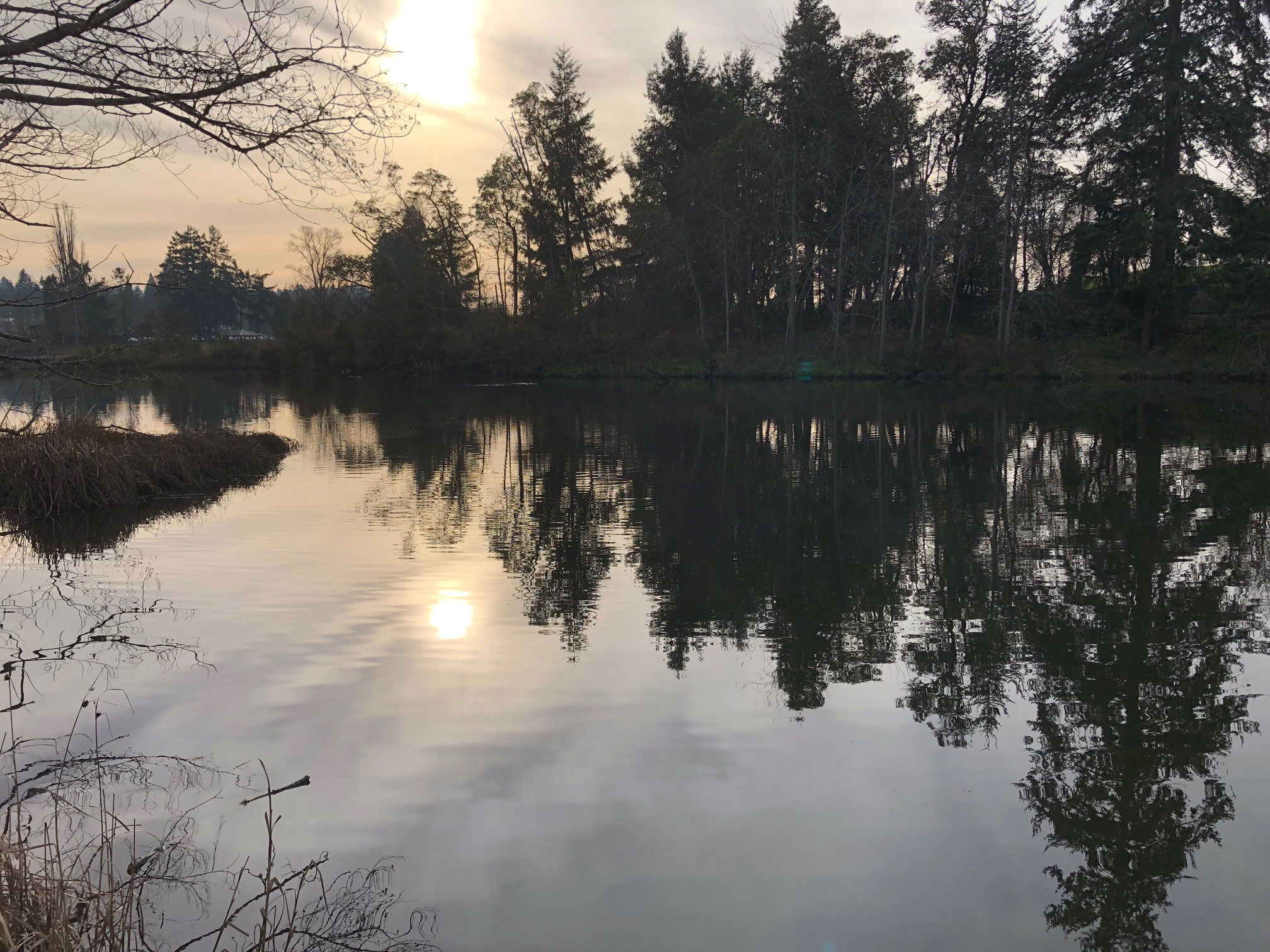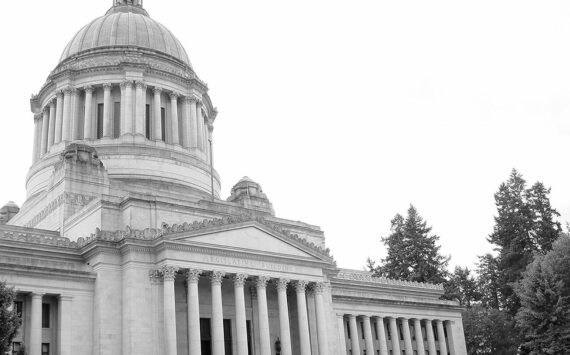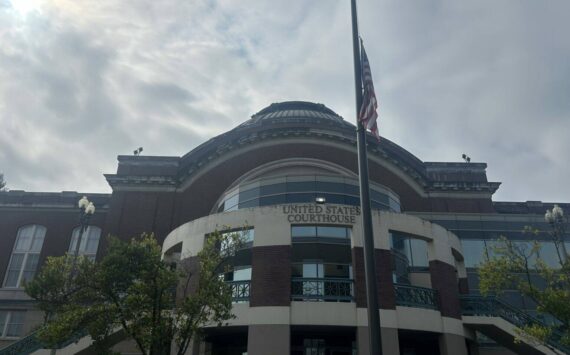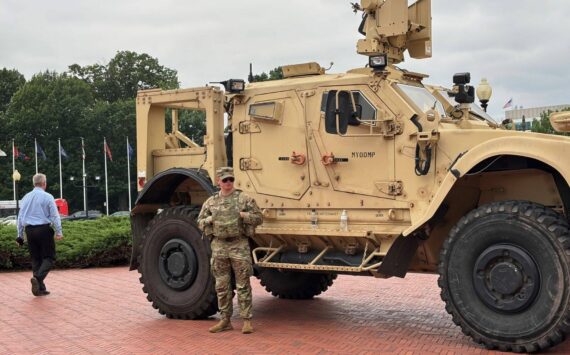“Everybody talks about the weather, but nobody does anything about it” – attributed to Mark Twain
By Morf Morford
Tacoma Daily Index
You don’t need to be a weather expert to notice that the weather has changed over the past decade or two (or three).
When I was a teenager, (yes, many years ago) Spanaway Lake froze over – completely – almost every year. More than once, back then, the ice was so thick that some kids I knew (and I am sure their parents did NOT know) had the nerve (and the necessary lack of forethought) to drive a car on the frozen surface.
I never did that, but I did see the car tracks across the surface of the lake more than once.
And one winter when I was 16 or 17, all by myself, I rode my bicycle out on the ice on Spanaway Lake. There was a light covering of snow on the ice so it was not very slick, in fact the traction was pretty good – unless you took a turn a bit too sharp
Close to the middle of the lake I hit a slick spot or maybe just turned a bit too tight. Whatever the cause, I slipped and crashed on the ice and watched my bike skitter across the surface of the lake.
I crawled on my hands and knees the twenty or thirty yards to my bike and, more cautiously now, walked my bike back to shore.
I mention that story because around here ice and snow have become close to non-existent. We might get an inch or so of snow, but it is gone in a day or two. And we might get a touch of ice, or, much more likely, a light frost, in the mornings, but virtually never will it last all day.
For most of us in the south Puget Sound area, snow and ice have been temporary annoyances (or cause for celebration and fun).
Our few cold spells are newsworthy, none more than the blizzard of January 1950. (1*) You can see details on that storm (and a video clip) here.
Back in the 1970s, iced over lakes were quite common. With my friends it was almost an annual event to go out on frozen lakes.
Oddly enough, we would occasionally see car tracks across the ice. This was fairly common on the tiny lakes around here (like lake Waughop).
In January of 1979 a couple boys frolicking on the surface of a frozen Spanaway Lake saw a car about 200 yards from shore under the ice. (2*) A body was found nearby.
Now however, cold weather, for the most part, doesn’t really impact very many of us directly – or financially.
But that is not true in most of the rest of the state – and even parts of rural Pierce County.


Weather impacts the quality – or even the possibility – of life in our area in more ways than most of us could imagine.
The accumulated winter snowpack is our water supply for spring, summer and fall. Most of our electricity is generated by hydropower, our steady flow of precipitation keeps our lights on.
Salmon thrive in our rivers – at least when the rivers themselves thrive.
If you’ve been east of the Cascades, you see lush orchards, wineries and vast stretches of agricultural land nourished by our snow.
Thanks to that snowmelt, crops flourish in the dry interior, helping the region produce tree fruit like cherries, apples and pears (number one in the world) and almost $17 billion worth of agricultural commodities, including 55% of potato, 15% of wheat, and 11% of milk production in the United States.
The Northwest’s economy, infrastructure, natural systems, public health, and agricultural sector all face important climate change related risks. Those risks – and how we respond to them – will vary significantly across the region. (3*)
Rising sea levels, in addition to tides and volatile weather will directly impact our ports and our state ferry system (the largest in the country).
Washington and Oregon have more than 140,000 acres of coastal lands that lie within 3.3 feet in elevation of high tide.
In Washington, that would primarily be the area south of Aberdeen – Grays Harbor and Pacific Counties in particular.
Erosion, tidal inundation, and flooding will continue to threaten public and private property along the coast including infrastructure like roads, bridges and housing including wastewater treatment plants, ferry terminals, and coastal road and rail transportation, especially in the Puget Sound area.
You may have noticed the past five years or so, that warm weather is coming several weeks earlier and leaving several weeks later. And we have had far more days over 90 degrees than ever before – most of us have never had air conditioning, but may be considering it now.
In 2018, we set a record of 32 days of at least 85 degrees, easily passing the 2017 record of 27, and well above our usual average of about 11. We reached 90 degrees on 11 days, second only to 2015’s 12 days.
And, believe it or not, our weather has been considerably drier – 36 inches of rain in 2018 compared to our usual 39 inches (that is a nearly 10% drop).
Our drier springs and summers have given us a new season – fire season. (4*) Smoke, haze and fire hazard warnings have become our new hallmarks of summer.
Drought seasons increase timber vulnerability to insect infestations and ever more increasing susceptibility to fire.
Whatever your politics or belief system, it couldn’t be more obvious that the weather has changed dramatically and will continue to get more extreme and volatile.
Agriculture in particular relies on predictable seasons. Annual crops require about a year of advance notice – orchards require decades. Rainfall, drought and unexpected freezes can make the difference between solvency and bankruptcy.
For most of us in the cities, it’s just more crazy weather.
And even in mid-January, we already are seeing buds peep out.
Just don’t tell anyone in the mid-West…..
And yes, of course the “weather is always changing” – but never at this pace and never with the infrastructure that we have all become dependent on. Power grids and pipelines – and highways and rail lines – and military bases (especially naval depots) make us vastly more vulnerable than a century (or two) ago. (5*)
I saw a ski industry magazine a few years ago that pointed out that in most regions, a full month of ski season had been lost thanks to a changing climate.
When it comes to the cost, you can’t get more pragmatic than the insurance industry. The cost of natural disasters around the world was $160 billion in 2018 (that’s $160,000,000,000.00). (6*) $24 billion of that was economic damage to California, three-quarters of which was insured.
That’s actually an improvement; 2017 cost us $350 billion and caused 13,000 fatalities.
The long term trend looks even more extreme.
If money talks, maybe we will finally start listening.
Whatever you want to call, it looks like we won’t be able to avoid it. Of afford it.
***********************
From the National Snow and Ice Data Center:
What is the difference between weather and climate?
Weather is the day-to-day state of the atmosphere, and its short-term variation in minutes to weeks. People generally think of weather as the combination of temperature, humidity, precipitation, cloudiness, visibility, and wind. We talk about changes in weather in terms of the near future: “How hot is it right now?” “What will it be like today?” and “Will we get a snowstorm this week?”
Climate is the weather of a place averaged over a period of time, often 30 years. Climate information includes the statistical weather information that tells us about the normal weather, as well as the range of weather extremes for a location.
We talk about climate change in terms of years, decades, and centuries. Scientists study climate to look for trends or cycles of variability, such as the changes in wind patterns, ocean surface temperatures and precipitation over the equatorial Pacific that result in El Niño and La Niña, and also to place cycles or other phenomena into the bigger picture of possible longer term or more permanent climate changes.
***************************
(1*) Here’s a video clip of skating on a frozen Gig Harbor bay in 1950 – https://www.youtube.com/watch?v=9RKezxz8ots
(2*) This was the height of the Carbone-Janovich Pierce County Sheriff racketeering era. The victim was a bouncer (who apparently knew too much) for The Good, The Bad, and the Ugly Tavern near Puyallup. As was typical for the times, the presumed murder was never solved.
(3*) To see more on shifting weather impacts across our region, take a look here – https://nca2014.globalchange.gov/report/regions/northwest#intro-section-2
(4*) You can see further details on our local weather here https://www.seattletimes.com/seattle-news/weather/2018s-heat-set-some-records-4-of-seattles-5-hottest-years-have-now-come-this-decade/
(5*) For some background on how the US military is responding to climate change, you could start here – https://www.pri.org/stories/2017-10-08/us-defense-department-takes-climate-change-seriously or https://news.nationalgeographic.com/2017/02/pentagon-fights-climate-change-sea-level-rise-defense-department-military/
(6*) https://qz.com/1517738/natural-disasters-caused-160-billion-in-damage-in-2018/?









